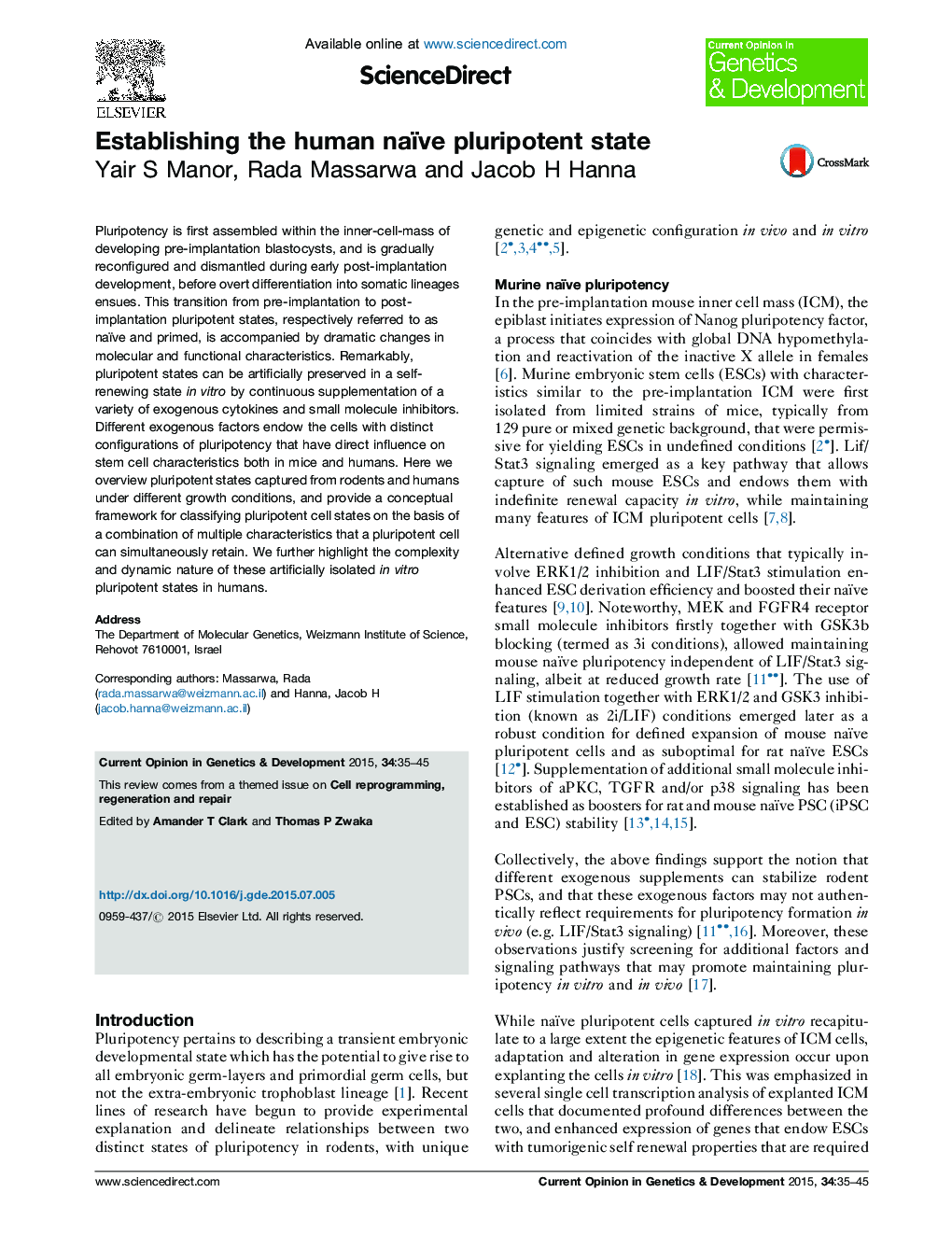| Article ID | Journal | Published Year | Pages | File Type |
|---|---|---|---|---|
| 5893083 | Current Opinion in Genetics & Development | 2015 | 11 Pages |
Abstract
Pluripotency is first assembled within the inner-cell-mass of developing pre-implantation blastocysts, and is gradually reconfigured and dismantled during early post-implantation development, before overt differentiation into somatic lineages ensues. This transition from pre-implantation to post-implantation pluripotent states, respectively referred to as naïve and primed, is accompanied by dramatic changes in molecular and functional characteristics. Remarkably, pluripotent states can be artificially preserved in a self-renewing state in vitro by continuous supplementation of a variety of exogenous cytokines and small molecule inhibitors. Different exogenous factors endow the cells with distinct configurations of pluripotency that have direct influence on stem cell characteristics both in mice and humans. Here we overview pluripotent states captured from rodents and humans under different growth conditions, and provide a conceptual framework for classifying pluripotent cell states on the basis of a combination of multiple characteristics that a pluripotent cell can simultaneously retain. We further highlight the complexity and dynamic nature of these artificially isolated in vitro pluripotent states in humans.
Related Topics
Life Sciences
Biochemistry, Genetics and Molecular Biology
Developmental Biology
Authors
Yair S Manor, Rada Massarwa, Jacob H Hanna,
